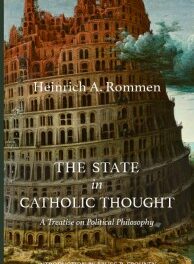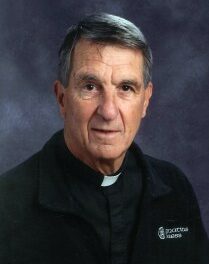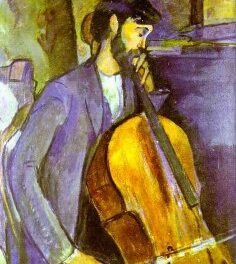We support our Publishers and Content Creators. You can view this story on their website by CLICKING HERE.
Is it too soon to appraise the revolutions of 1989? That year represented the end of an era whose passing few people would be disposed to mourn. On the other hand, history affords no clean breaks.
Nine months after the Berlin Wall had been breached, my wife and I found ourselves living in Göttingen, an hour’s drive from the newly opened border between the two German states:
Families strolled beside the border fortifications, the children clambering up watchtowers, their windows smashed, that had been abandoned months before the frontier between the German Democratic Republic and the Federal Republic officially disappeared. One father was standing atop a van alongside the fence, its twelve-foot-high concrete piers webbed with heavy steel mesh, unbolting sections of the latter and handing them down to his sons…. Everybody was trying, one sensed, to convince himself that the changes, swift and sweeping, of what had for so long seemed immutable were indeed real.
That the Soviet imperium had warped the nations of the East into shapes remote from their natural bent was plain to anyone with eyes to see, but not many people realized just how brittle the satellite regimes were, and nobody anticipated the manner or timing of communism’s demise. As that quintessential insider Robert Gates put it in his 1997 book From the Shadows, “I know of no one in or outside of government who predicted early in 1989 that before the next presidential election Eastern Europe would be free, Germany united in NATO, and the Soviet Union an artifact of history.”
Now we have a slew of studies to help us understand the events of 1989…. Jeffrey Engel’s collection, The Fall of the Berlin Wall, focuses on great power politics and the grand strategists rather than on the crowd scenes one remembers from the news. The mass demonstrations mattered, to be sure, but the decisive move had taken place earlier when, as Engel relates, “Gorbachev told his socialist counterparts that the Kremlin would never again crush Eastern European reformers with force.” The Brezhnev doctrine? Revoked! Just how different the course of events in Central and Eastern Europe might have been had there been no Gorbachev one can infer from the May 1989 crackdown in Tiananmen Square. The enormous irony here is that the Chinese communist state endured, while the Soviet Union, despite—or perhaps in part because of—its leader’s readiness to bend, did not.
In the chapter he contributes to the Engel volume, on the role the European Community played in transforming the eastern moiety of the continent, James J. Sheehan recounts Gorbachev’s developing interest in the West, especially the varieties of democratic socialism represented by such figures as Willy Brandt and Olof Palme. Sheehan notes also Gorbachev’s affinity with Margaret Thatcher, who in turn facilitated his relationship with Ronald Reagan. At the heart of the Soviet leader’s reform agenda was his rejection of war as a political instrument and his belief in the gradual transformation of social and political life through economic growth. The end of this process was to be his country’s finding its place in a “common European home” stretching from the Atlantic to the Urals. This was an aspiration not shared by Western leaders, some of whom were suspicious of Gorbachev’s motives, and virtually all of whom doubted his staying power. “There was indeed a common European home,” concludes Sheehan, “but there was no room in it for the Soviet Union.”
In their essay, William Taubman and Svetlana Savranskaya stress the distance Gorbachev traveled between 1985 and 1989: from détente to ending the Cold War, from attempts to repair a broken system to a push to transform the Soviet Union into a modern democratic society. On November 10, 1989, the day after the Wall fell, Gorbachev’s chief foreign policy adviser, Anatoly Chernyaev, wrote in his diary: “This is the end of Yalta….[Gorbachev] has indeed turned out to be a great leader. He has sensed the pace of history and helped history find a natural channel.” While many people in the West might be inclined to second Chernyaev’s judgment, many Russians would not. For them 1989 was, as Taubman and Savranskaya point out, “the time when the Soviet Union ‘lost’ Eastern Europe, along with other fruits of the Great Patriotic War, without getting anything in return—no massive economic package, no ‘Marshall Plan,’ no integration with Western Europe.”
In the concluding chapter of the Engel collection, Melvyn P. Leffler explores the implications of 1989 for American foreign policy. For the first nine months of the year, while the administration of George H.W. Bush sought to find its footing, the U.S. had relatively little influence on events in Central and Eastern Europe, although the new president did welcome, in an address in Mainz that May, the prospect of “a Europe whole and free.” Once the revolutionary tide had crested, the Americans had to determine how best to engage the new geopolitical reality. Toward what ends should the U.S. as the sole remaining superpower—a phrase repeated endlessly in those days—exercise its hegemony? Bush, in ordinary circumstances a capable manager, was famously not master of what he called “the vision thing.” He spoke of a “new world order” but offered little in the way of specifics. The administration was understandably wary of becoming ensnared in intractable situations. Even its most notable intervention, taking Kuwait back from Saddam Hussein, testified to that. “We are not going to Baghdad,” declared Defense Secretary Cheney in April 1991. “Our military objectives [do] not include changing the Iraqi government.” Obviously the Dick Cheney of a dozen years later had altered his opinion. How much of that shift, Leffler asks, emanated from “rhetorical tropes and manufactured memories that associated the end of the Cold War with Berliners traversing the Wall—dancing for joy, dancing for history”—from the assumption, that is, that all dictatorships are at their core hollow, just waiting for the push that will send their people into the streets, ready to greet their liberators with roses?
The Western partners accomplished a great deal in the course of a year. In addition to unifying Germany, they extended the EC and NATO to the east, laying the groundwork for the eventual enlargement of those institutions to the very borders of Russia, and in the process assured the all but universal dominance of market economics. The price they paid was letting slip a “chance to foster enduring cooperation with an unusually willing… Russian leadership”—a chance that, as Sarotte wistfully observes, “will not reappear soon.”
In 1972, Richard Nixon is reputed to have asked Chou En-lai about the historic impact of the French Revolution of 1789. The Chinese premier is said to have replied: “It is too early to tell.” Is it too soon to appraise the revolutions of 1989? That year represented the end of an era whose passing few people would be disposed to mourn. On the other hand, history affords no clean breaks and there remain the effects of a half century of communism, preceded by a dozen years of fascism, and several derelict empires before that. The events of 1989 made possible an expansion of the European Union from the twelve members that composed it then to its current total of twenty-seven. Problems of political and economic integration continue to dog the continent, the leading issue as I write being the lack of adequate coordination in the eurozone between fiscal and monetary policy.
A shorthand way of answering the question of what we should make of 1989 might be to take a stroll through Berlin Mitte, the epicenter of the Cold War and the place that more than any other figured forth its close. If one walks westward along Unter den Linden in what used to be East Berlin, past the statue of Frederick the Great, the Deutsche Staatsoper, and the buildings of Humboldt University, one comes to the Brandenburg Gate. Two decades ago the Wall, with its guard towers and death strip, rose just beyond the Gate. On November 9, 1989, the Brandenburg Gate, for so many years the arch-emblem of impasse and division, became—literally overnight—the symbol of openness and reconciliation. The intervening decades have seen this part of Berlin transformed from a no-man’s-land into the pivot of a world city. A little to the north is the splendidly refurbished Reichstag building, once again the parliamentary seat of a united Germany after a lapse of sixty-six years, while to its south is the striking new Memorial to the Murdered Jews of Europe, dedicated precisely sixty years after the end of World War II. How many capitals have a penitential site at their heart? Where then do matters stand twenty years on? There are of course problems enough to go around, but also ample grounds for satisfaction and hope.
Republished with gracious permission from The Intercollegiate Review (Fall 2014).
This essay was first published here in November 2016.
The Imaginative Conservative applies the principle of appreciation to the discussion of culture and politics—we approach dialogue with magnanimity rather than with mere civility. Will you help us remain a refreshing oasis in the increasingly contentious arena of modern discourse? Please consider donating now.
The featured image is a photograph taken by Stefan Richteris of the partly destructed Berlin Wall with border police, view from west, Brandenburg Gate in the background, November 1989. This file is licensed under the Creative Commons Attribution-Share Alike 3.0 Unported license, courtesy of Wikimedia Commons.

 Conservative
Conservative  Search
Search Trending
Trending Current News
Current News 






